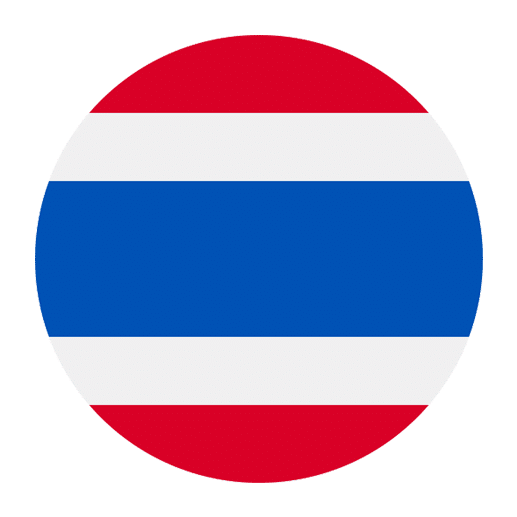The Thai language, with its melodic tones and unique script, is a fascinating subject for linguists and language learners alike. Its development has been influenced by a variety of languages over the centuries. Among these, Sanskrit holds a particularly significant place. The ancient language of Sanskrit has left an indelible mark on the Thai language, influencing its vocabulary, script, and even cultural context. This article delves into the profound impact of Sanskrit on the Thai language, exploring its historical roots, the process of linguistic borrowing, and the enduring legacy of this ancient connection.
Historical Context
To understand the influence of Sanskrit on Thai, we must first explore the historical and cultural exchanges between India and Thailand. The introduction of Sanskrit to Southeast Asia, including Thailand, can be traced back to the spread of Indian culture and religion. Around the first millennium CE, Indian traders, scholars, and monks traveled to Southeast Asia, bringing with them the rich traditions of Hinduism and Buddhism. These religions, deeply rooted in Sanskrit texts, played a pivotal role in shaping the spiritual and cultural landscape of the region.
During the Dvaravati period (6th to 11th century CE), the Mon people, who were the dominant ethnic group in central Thailand, adopted many aspects of Indian culture, including the use of Sanskrit. This period marked the beginning of Sanskrit’s influence on the Thai language. The subsequent Khmer Empire (9th to 15th century CE) further facilitated the spread of Sanskrit through its own extensive use of the language in inscriptions and religious texts.
Linguistic Borrowing
Vocabulary Enrichment
One of the most apparent influences of Sanskrit on Thai is in its vocabulary. A significant number of Thai words, particularly those related to religion, philosophy, science, and the arts, are borrowed directly from Sanskrit. These borrowed words, known as “loanwords,” have been integrated into the Thai lexicon, often with slight modifications to fit Thai phonology and morphology.
For example, the Thai word for “universe” is “จักรวาล” (chakkrawan), derived from the Sanskrit “จักรวาล” (cakravāla). Similarly, the Thai term for “dharma” is “ธรรม” (tham), originating from the Sanskrit “धर्म” (dharma). These examples illustrate how Sanskrit has enriched the Thai language, providing it with a sophisticated and nuanced vocabulary.
Phonological Adaptations
When Sanskrit words were borrowed into Thai, they often underwent phonological adaptations to align with the phonetic system of the Thai language. Thai, being a tonal language with distinct syllable structures, required modifications to fit the borrowed words into its linguistic framework.
For instance, the Sanskrit word “राज” (rāja), meaning “king,” is adapted in Thai as “ราชา” (racha). The addition of the final syllable “า” (a) helps the word conform to Thai phonotactic rules. Similarly, the Sanskrit word “मन्त्र” (mantra) becomes “มนตรา” (montra) in Thai, with the final “า” (a) added to suit Thai pronunciation patterns.
Semantic Shifts
In some cases, Sanskrit words borrowed into Thai have undergone semantic shifts, acquiring new meanings or nuances in their adopted language. This phenomenon highlights the dynamic nature of linguistic borrowing and the ways in which languages evolve over time.
An example of semantic shift is the Thai word “บุญ” (bun), derived from the Sanskrit “पुण्य” (puṇya), which originally means “merit” or “virtue.” In Thai, “บุญ” (bun) retains its original meaning but has also come to encompass the broader concept of “good deeds” or “acts of generosity.” This semantic expansion reflects the cultural and religious significance of merit-making in Thai society.
Script and Orthography
Brahmi Script and Its Influence
The influence of Sanskrit on the Thai language is not limited to vocabulary alone; it extends to the script and orthography as well. The Thai script, known as “อักษรไทย” (akson Thai), has its roots in the ancient Brahmi script of India. The Brahmi script, used to write Sanskrit and other Indian languages, served as the foundation for the development of various scripts in Southeast Asia, including the Khmer and Mon scripts, which in turn influenced the Thai script.
The evolution of the Thai script can be traced back to the Sukhothai period (13th to 14th century CE), when King Ramkhamhaeng is credited with creating the first Thai script based on the Brahmi-derived scripts of the Khmer and Mon. This historical connection underscores the profound impact of Sanskrit on the written form of the Thai language.
Loanwords in Thai Script
When Sanskrit loanwords were integrated into the Thai language, they were often written using the Thai script. The Thai script, with its intricate characters and diacritical marks, was adapted to accommodate the phonetic features of Sanskrit words.
For example, the Sanskrit word “महत्त्व” (mahattva), meaning “importance” or “greatness,” is written in Thai as “มหัตถ์” (mahat). The Thai script preserves the phonetic elements of the original Sanskrit word while adapting it to Thai orthographic conventions. This process of script adaptation highlights the seamless integration of Sanskrit loanwords into the Thai writing system.
Cultural and Religious Context
Buddhism and Sanskrit
The influence of Sanskrit on the Thai language is deeply intertwined with the spread of Buddhism in Thailand. Buddhism, which originated in India, relies heavily on Sanskrit and Pali texts for its teachings and scriptures. As Buddhism took root in Thailand, the Sanskrit language became an integral part of religious and scholarly discourse.
Many Buddhist terms and concepts in Thai are borrowed directly from Sanskrit. For instance, the Thai word for “Buddha” is “พระพุทธเจ้า” (Phra Phuttha Chao), derived from the Sanskrit “बुद्ध” (Buddha). Similarly, the Thai term for “nirvana” is “นิพพาน” (nippan), originating from the Sanskrit “निर्वाण” (nirvāṇa). These examples underscore the profound influence of Sanskrit on the religious vocabulary of Thai.
Literature and Epigraphy
Sanskrit’s impact on Thai extends beyond religious contexts to literature and epigraphy. Inscriptions and literary works from ancient Thailand often feature Sanskrit phrases and verses, reflecting the prestige and significance of the language in historical contexts.
One notable example is the Ramakien, the Thai version of the Indian epic Ramayana. While the Ramakien is written in Thai, it draws heavily from the Sanskrit original, incorporating Sanskrit names, terms, and poetic structures. This cross-cultural literary exchange illustrates the deep-rooted connection between Sanskrit and Thai literature.
Modern-Day Relevance
Sanskrit in Contemporary Thai
While the influence of Sanskrit on the Thai language is most evident in historical and religious contexts, its legacy persists in contemporary Thai as well. Many Sanskrit-derived words continue to be used in everyday language, particularly in formal, academic, and religious settings.
For example, the Thai word for “university” is “มหาวิทยาลัย” (mahawitthayalai), derived from the Sanskrit “महाविद्यालय” (mahāvidyālaya). Similarly, the Thai term for “constitution” is “รัฐธรรมนูญ” (rathathammanun), originating from the Sanskrit “राजधर्मनियम” (rājadharmaniyama). These instances demonstrate how Sanskrit loanwords remain relevant in modern Thai, contributing to its rich and diverse lexicon.
Linguistic Awareness and Preservation
The enduring influence of Sanskrit on the Thai language highlights the importance of linguistic awareness and preservation. Understanding the historical and cultural connections between languages fosters a deeper appreciation for their evolution and significance.
Efforts to preserve and promote the study of Sanskrit in Thailand continue to play a crucial role in maintaining this linguistic heritage. Educational institutions, cultural organizations, and scholars work to ensure that the knowledge and legacy of Sanskrit are passed down to future generations. By doing so, they contribute to the preservation of a vital aspect of Thailand’s linguistic and cultural identity.
Conclusion
The influence of Sanskrit on the Thai language is a testament to the enduring connections between cultures and languages. From enriching the Thai vocabulary with sophisticated loanwords to shaping its script and orthography, Sanskrit has left an indelible mark on the Thai language. This influence extends beyond linguistic elements to encompass cultural, religious, and literary contexts, reflecting the profound impact of Indian culture and Buddhism on Thailand.
As we explore the historical roots and modern-day relevance of Sanskrit in Thai, we gain a deeper appreciation for the intricate web of linguistic and cultural exchanges that have shaped the Thai language over the centuries. The legacy of Sanskrit in Thai serves as a reminder of the dynamic nature of languages and the enduring power of cross-cultural connections. For language learners and enthusiasts, this journey into the influence of Sanskrit on Thai offers a fascinating glimpse into the rich tapestry of human linguistic heritage.

